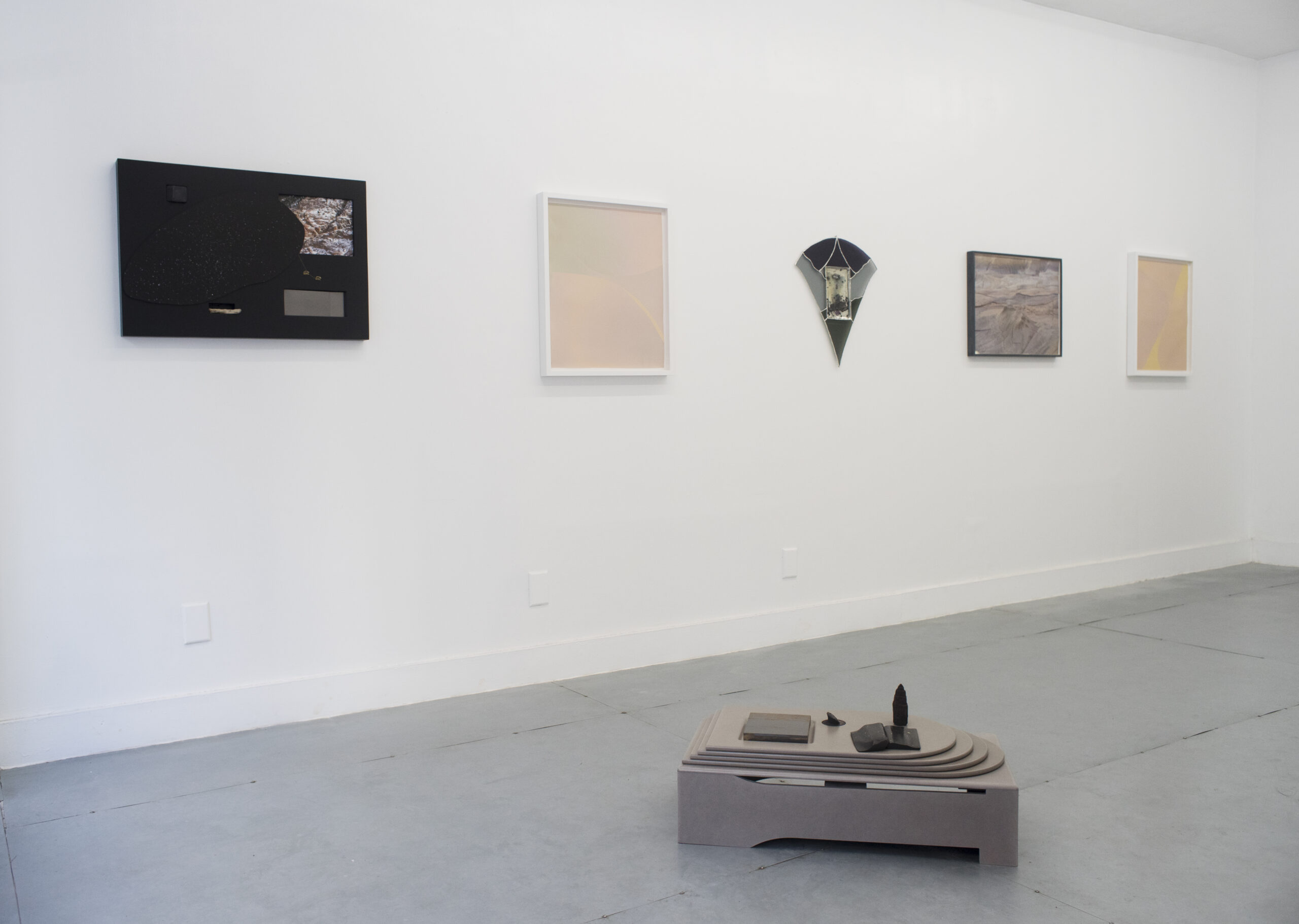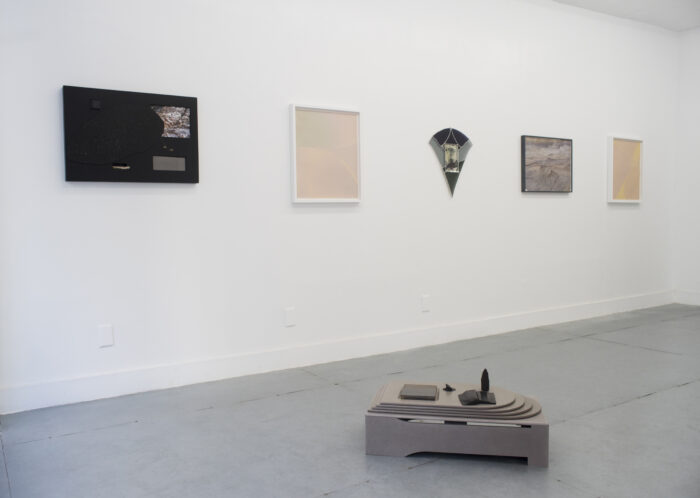
“On Colored Shadows” at the Rubber Factory
Suzanna Zak, Myeongsoo Kim and Rachelle Bussières
June 19 – August 29, 2021
The summer of 2021 has arrived, and New Yorkers are taking advantage of it with a sweaty fervor. Bars are packed, parks are teeming with impromptu games and grill-outs, and the L train to the Rockaways is full every weekend. However, underneath the joy of this much-needed release is the simmering dread that accompanies our inarguably changing climate. Record heatwaves across huge swathes of the American West prove to make this the hottest summer on record in the United States, as well as the coldest summer of the rest of our lives. For this author, the desire to cavort in the now fully reopened city is matched by a desire to get out of town and see the beauty of our planet as it grows ever more precarious by the day. On Colored Shadows at the Rubber Factory in LES presents alternatives for how humans might relate to the natural world, modeling a personal investment in its wonder instead of an endless desire to extract value. Myeongsoo Kim, Suzanna Zak, and Rachelle Bussières each make work that demonstrates their personal relationship to the natural as foundational in their artistic practices.
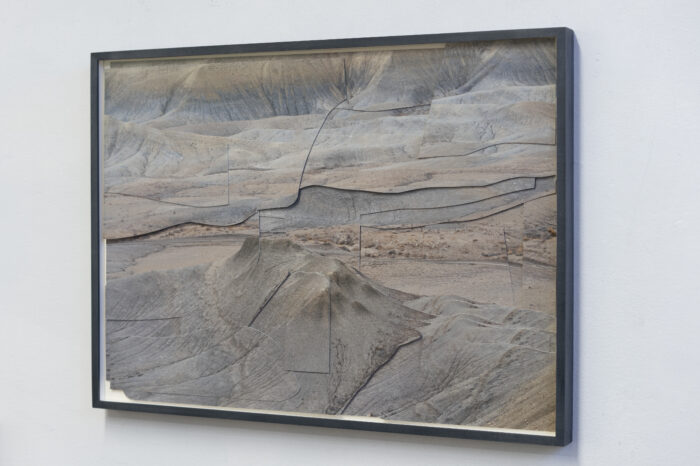
Myeongsoo Kim’s work alternates between the searching eye of the naturalist and the particularity of an eccentric collector. His two wall works, Desolate landscape-01 and Desolate landscape-02-GSE, look from afar like crisp photographs of a desert, with undulating dunes and striated geographic formations. Upon closer inspection, they are revealed as composite images. When viewed from the side, they are made up of a series of cutouts of other images, but so closely fit together that they seem unified when viewed straight on. Each image is no longer representative of a particular place, but indexical of the concept of “desolate landscape” in the abstract. In my private composition and Landscape with two bears demonstrate the aforementioned collector’s impulse. Landscape with two bears anticipates the Desolate Landscape works, combining a starry sky with an image of a snowy cliffside. A gold necklace with two bears seems to be walking across the black background of the piece, with the cliffs to their left and the stars above. The other elements in this work are more difficult to decipher, and render the piece a tad opaque, if still charming.
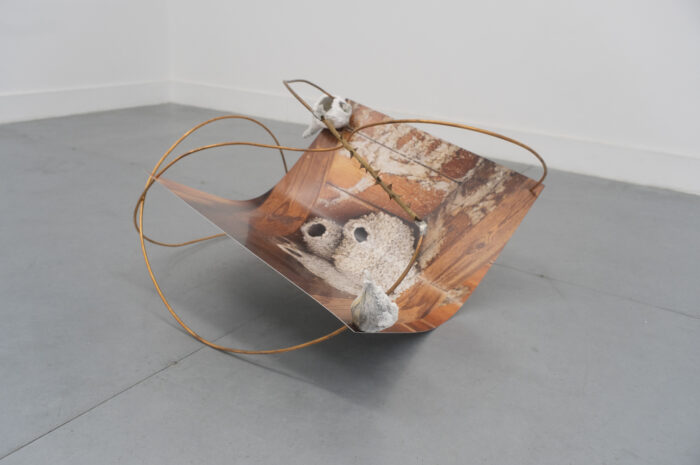
Suzanna Zak strikes a different tone with the landscape. A Fine Example of the Interfacing of Human and Barn Swallow Cultures functions as an efficient and playful metaphor for human/natural interaction. The photograph depicts the alien shapes of barn swallow nests that have been built within the corner of some human structure. The image is printed on a bent piece of metal and is intersected at multiple points by a curving metallic form, except for when that curve is interrupted by a rose branch and decaying conch shells. The work’s strength lies in how the human and non-human elements intersect seamlessly, suggesting a symbiotic relationship between people and animals which we have yet to achieve. Her framed works are luminous constructions that preserve natural scenes in colored glass. The strongest is Lunar Longevity, which possesses’ an extraordinarily delicate composition. The minuscule crescent moon in the center of the image is a sliver of white which is offered to the viewer as a reward for close looking.
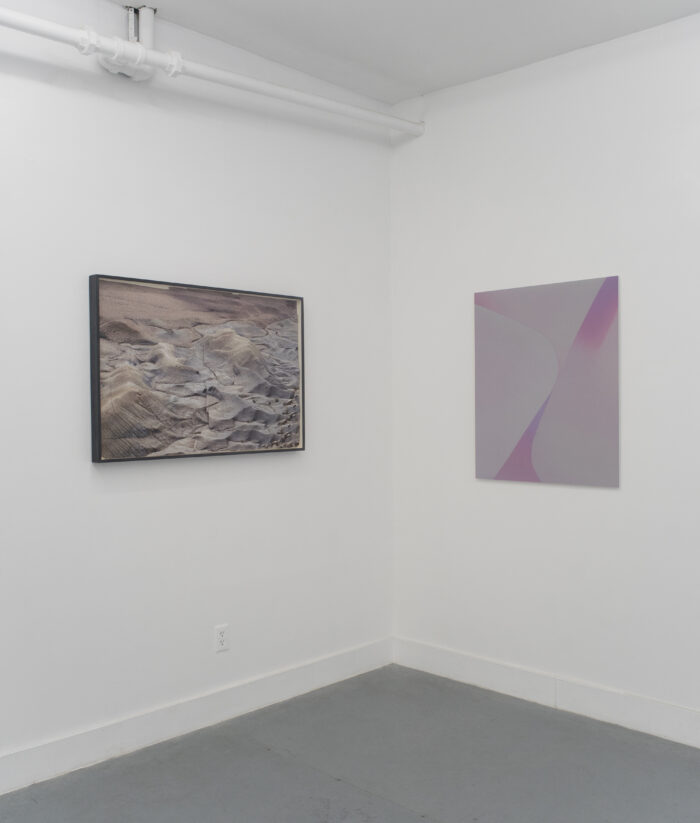
Rachelle Bussières takes the least obvious but most direct approach to engage with the natural world. All four of her pieces in the show utilize the same process, whereby she uses various reflective tools to “sculpt” the exposure of sunlight onto the surface of her photographs. These works demonstrate how photographic processes can engage with the natural world symbiotically, instead of just as an object of study for the lens. Parted II, executed over the course of four days, possesses a surprising range of subtle tones and values. Most striking is the extremely precise curving lines that form the composition’s central portion, dividing it into three distinct sections. These works are gentle and easy to look at, but more rewarding after understanding the artist’s careful process. On Colored Shadows brings together three artists who are each developing a distinct idiom, and yet all three convey different versions of a similar idea: our world is a treasure, and artists help us preserve the memory of all we will lose as a result of climate change.
